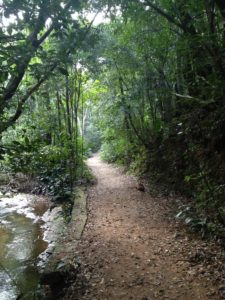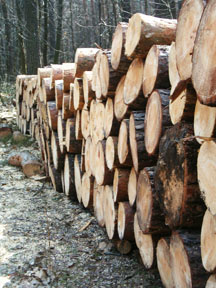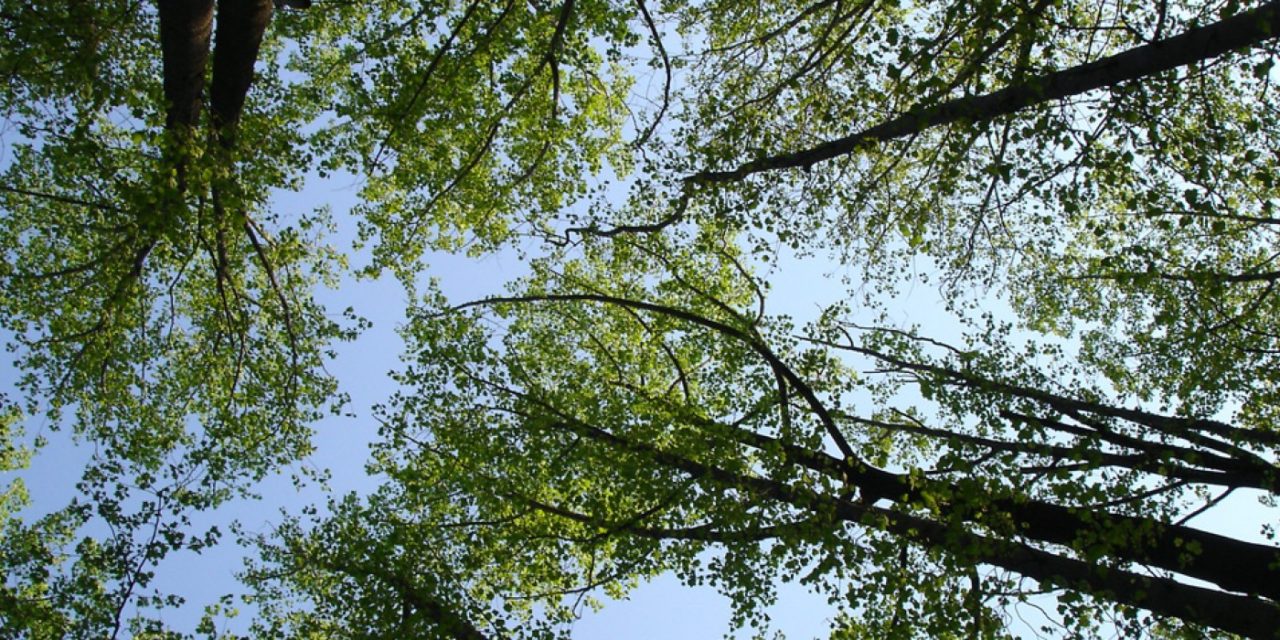16 Ways to Solve the Problem
I was flabbergasted (and that’s pretty serious) at our local Sierra Club meeting when the executive director of our Santa Ana mountain ecological reserve informed us that there is such a thing as nature deficit disorder.
 I know from communing with nature myself that I feel the strongest connection between my soul and the earth when hiking in the woods among redwoods or any woodsy area, canoeing down a river with banks brimming with greenery, or enjoying lunch beside a rushing waterfall.
I know from communing with nature myself that I feel the strongest connection between my soul and the earth when hiking in the woods among redwoods or any woodsy area, canoeing down a river with banks brimming with greenery, or enjoying lunch beside a rushing waterfall.
Activities involving nature never fail to rejuvenate and make me feel alive. The feeling is uncanny, and I can’t achieve it through any other activity. I realize many people don’t get the chance or make the time to enjoy our bountiful nature. But I had no idea that a disorder had actually been named for the poor souls who live and work, hopping from home to office to shopping center, and traveling on paved highways overcrowded with other vehicles in between. Of course their children, too, miss out on nature as a result.
What is Nature Deficit Disorder?
Nature deficit disorder is a hypothesis posed in 2005 by Richard Louv, founder of the Children & Nature Network, in his book, Last Child in the Woods. Louv’s theory is that many of our younger generation’s behavior problems stem from their lack of connection with the great outdoors.
Truth is, they do spend an enormous amount of time in front of the TV, engrossed by any number of electronic devices, or involved in sports and other social activities. According to a 2007 study of 1178 children by Harris Interactive, kids from 8 to 18 spend an average of 44.5 hours a week in front of one type of screen or another.
And according to Discover the Forest, a website for tweens (kids 10 to 14), developed through a partnership between the U.S. Forest Service and the Ad Council, “The average American child can recognize 1,000 corporate logos, but can’t identify 10 plants or animals native to his or her own region.”
Nature is in Danger
I witnessed firsthand how a lot of people just don’t comprehend how important nature is to our well-being. The people in our town of Temecula, California and surrounding areas spent seven years fighting our county government to get them to disallow Granite Construction Company from opening the massive, mile-wide Liberty Quarry in our midst (ironic name, Liberty!).
It was to be one of the largest open pit, hard rock mega mines in the U.S., and would operate 24/7 for 75 years, blasting through 100,000 tons of rock each week (that translates to 200 million pounds). Not to mention the devastating health risks to our population from silica dust and other harmful gases and particles, this project would have destroyed the last corridor available to our wildlife to pass from the Pacific Coast inland, enabling them to disperse as climate conditions change as well as to forage for food.
Additionally, San Diego State University runs a 4344-acre research field station near the proposed quarry site to keep the property in its natural state for the preservation and protection of native plants, animals and habitat. This effort is also preserving the Santa Margarita River and its ecosystem, one of the last free-flowing rivers in coastal Southern California.
Despite the devastation this quarry would have leveled on nature, and the throngs of citizens and local interest groups who continued to voice their pleas for seven years, the Riverside county supervisors approved the project anyway. Thankfully, the Pechanga Band of Luiseño Indians bought back their own land literally at the last hour in order to thwart the plan.
As informed citizens, we all need to act to protect large plots of land like this to serve as habitats for our endangered plants and animals. The truth is we can’t live without their continuation because of their contribution to our ecosystem. An example familiar to all is our vanishing bee population. The U.S. Fish and Wildlife Service reports, “More than 90 percent of all flowering plants and more than 75 percent of our crop plants rely on pollinators.” And big business will not admit that their pesticides must be stopped.
Currently in California, due mainly to urban sprawl, 149 animals and 283 plants are listed as endangered, threatened, or rare. According to the U.S. Fish and Wildlife Service, nationwide we experienced more than a 30 percent increase in endangered and threatened species between 1995 and 2000. California is one of the states that is most challenged.
Several Shocking Facts
The International Union for Conservation of Nature (IUCN) posted on the National Geographic website in September, 2014, that “The biodiversity of life on Earth is disappearing faster than at any time in human history. Among the many people sounding the alarm of our disappearing natural history, the IUCN Red List is the instrument used to measure biodiversity loss and the species that are most at risk of extinction.”
IUCN continues, “People like Elizabeth Kolbert [science staff writer at The New Yorker and author of The Sixth Extinction: An Unnatural History] and many others contend that we are in the midst of the sixth mass extinction event and echoes of her sentiments can be heard throughout conservation, environmental, and social media circles in every language on earth.”
The World Wildlife Fund (WWF), whose mission is “to stop the degradation of our planet’s natural environment,” reports that their analysis shows the number of wild animals on Earth has halved in the past 40 years.
 WWF states further, “About 80 percent of the world’s documented species can be found in tropical rainforests—some of the forests most vulnerable to deforestation. Even localized deforestation can result in extinctions. When forests are lost or degraded, their destruction sets off a series of changes that affect life both locally and around the world.” They report that 46,000 to 58,000 square miles of forest are lost each year (36 football fields every minute), and 17 percent of the Amazon forest has been lost in the last 50 years.
WWF states further, “About 80 percent of the world’s documented species can be found in tropical rainforests—some of the forests most vulnerable to deforestation. Even localized deforestation can result in extinctions. When forests are lost or degraded, their destruction sets off a series of changes that affect life both locally and around the world.” They report that 46,000 to 58,000 square miles of forest are lost each year (36 football fields every minute), and 17 percent of the Amazon forest has been lost in the last 50 years.
This is all happening because of the way we choose to live—and because too many of us are looking the other way.
How to Fix the Problem
Nature deficit disorder is clearly a problem—not only does it directly affect our health and well-being if we fail to connect with nature, but the very survival of nature itself is in grave danger if we remain unsympathetic to the critical importance of preserving it. It’s up to all of us to fix this problem before it’s too late. Kids and adults both are missing out on the healing aspects of nature—and our natural habitats are suffering from the lack of understanding and care they would receive if we were all interested in preserving them.
As with any Problem, Awareness is the First Step
Since you are more aware, what can you do to change it?
1. Get out in nature—and take your kids or someone else’s. Once a person of any age experiences our wildlife and the plant kingdom, it becomes a necessity of life. You just have to return again and again.
2. Take a hike. This can include one of our national trails or any local hiking route (Appalachian National Scenic Trail, Pacific Crest National Scenic Trail, North Country National Scenic Trail (the longest). View the full list here: National Scenic Trails
3. Take a simple walk outdoors anywhere.
4. When you’re in an area with clean air, breathe deeply—be thankful.
5. Plan trips that incorporate the great outdoors.
6. Find a forest and visit it: National Forests, Discover the Forest, Visit My Forest.
7. Take tours of wildlife areas led by informative rangers and scientists.
8. Educate yourself—read articles like this and then Google on your own to verify and learn more.
9. Subscribe to National Geographic Magazine.
10. Join your local Sierra Club or other outdoor group. Or start one—Meetup.com typically has a lot of local outdoor groups. Get your kids into scouting.
11. Learn to swim, scuba dive, canoe, kayak or take up nature photography. Then make use of your new outdoor skill.
12. Become active—find a special cause to protect nature—volunteer, donate or get hired by them.
13. Learn about and get involved with Children & Nature Network (C&NN), the leading movement to connect all children, their families and communities to nature:
14. Educate the public, starting with family and friends. Get them involved, too.
15. If you’re looking for a great career for the future, think about one that preserves the planet.
16. Learn all you can about what you can do to preserve nature and do it!
__________________________________________
By Jan Tucker, publisher


